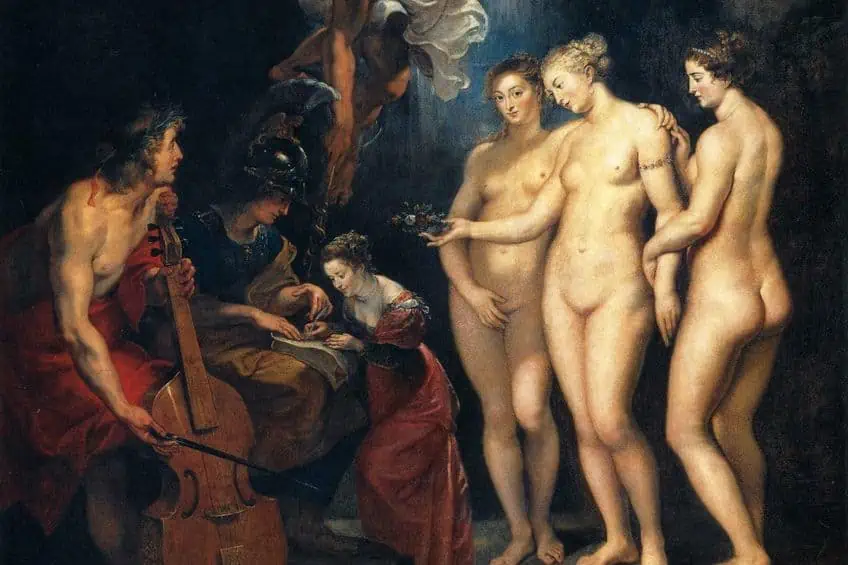Medici Family – Discover Why This Family Was So Influential
From artistic affiliation with Michelangelo and Sandro Botticelli to figures of authoritarianism and the development of art and science in Florence, the Medici family was perhaps the most powerful and influential family of the Renaissance. Their influence began in the 15th century and lasted well into the 18th century, providing select financial support to many artists and innovators of the Italian Renaissance while leaving behind an unforgettable historical legacy. In this article, we will dive into a history of the Medici family that weaves through the power dynamics of the family’s influence on crucial parts of Florence’s cultural development, as well as their position as prominent art patrons, politicians, and their eventual fall from glory. Keep reading to learn all the interesting details about one of the art world’s most powerful families!
Power and Politics: The Medici Family of Florence
Who were the Medici family, and what role did they play in shaping the groundwork of Italian Renaissance art? One might find many references to this notorious name when encountering the likes of artists like Michelangelo, Sandro Botticelli, and Leonardo da Vinci. With these prominent figures alone, one might assume the Medici family to be of incredible power and wealth to certainly recognize the talents of these master artists and finance some of the world’s most famous artworks. In a society where art patrons with immense wealth have receded from the public eye, one might find the history of such a family to sound almost fictional. However, we assure you that the position of the Medici was very far from fictional and was, in fact, one of the most powerful families in Europe since 1397.
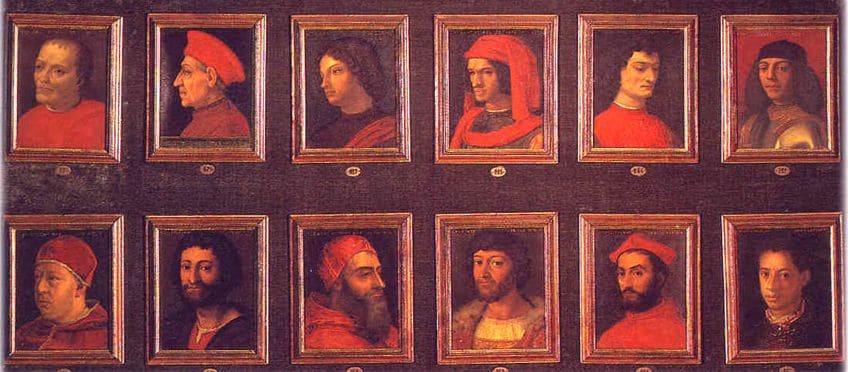
One can also credit the introduction of the well-known delicious dessert gelato to the Medici family, who were instrumental in working with the Italian chef Bernardo Buontalenti to produce a banquet for the reception of the Spanish deputation in 1565. The chef’s invention was, of course, gelato, which delighted everyone at the banquet. While the Medici family tree is incredibly lengthy, below, we will unpack the rise and fall of the House of Medici, including a selection of its most notable members, famous artworks that are affiliated with the family, and their influence on Europe across art and politics.
Tracing the Medici Family History: Rise to Power
Rome was not built in a day, and neither was Florence, which is widely considered to be the birthplace of some of the world’s greatest art masters and cultural masterpieces. Florence is located in the region of Tuscany, which is home to many globally renowned artworks and architectural sites. From the iconic Duomo to the treasure trove of artworks at the Uffizi Gallery, Florence remains a must-see for many art enthusiasts, even if one does not know much about art history, the visuals of the city alone might enchant you.
The Medici family tree holds a long record of engaging in historically prominent events and political affairs in and beyond Florence, even through their affiliations with royal figures.
The Medici’s were simply citizens who had amassed a wealth of power through strategic business dealings, business ideas, a bank, and even bribery at certain points. However complex their history, it is clear that the family’s legacy left behind many pivotal works of art that widely shaped European art history and funded many artists, who remain “master” artists, according to contemporary minds. It is believed that the Medici family tree emerged from the historic Mugello region in Northern Tuscany and was first documented as far back as 1230. The meaning of the family name is unclear but is believed to have been derived from the plural form of the word “medico”, meaning doctor, with their institutional legacy birthed in 1397 through the establishment of the Medici Bank, based in Florence.
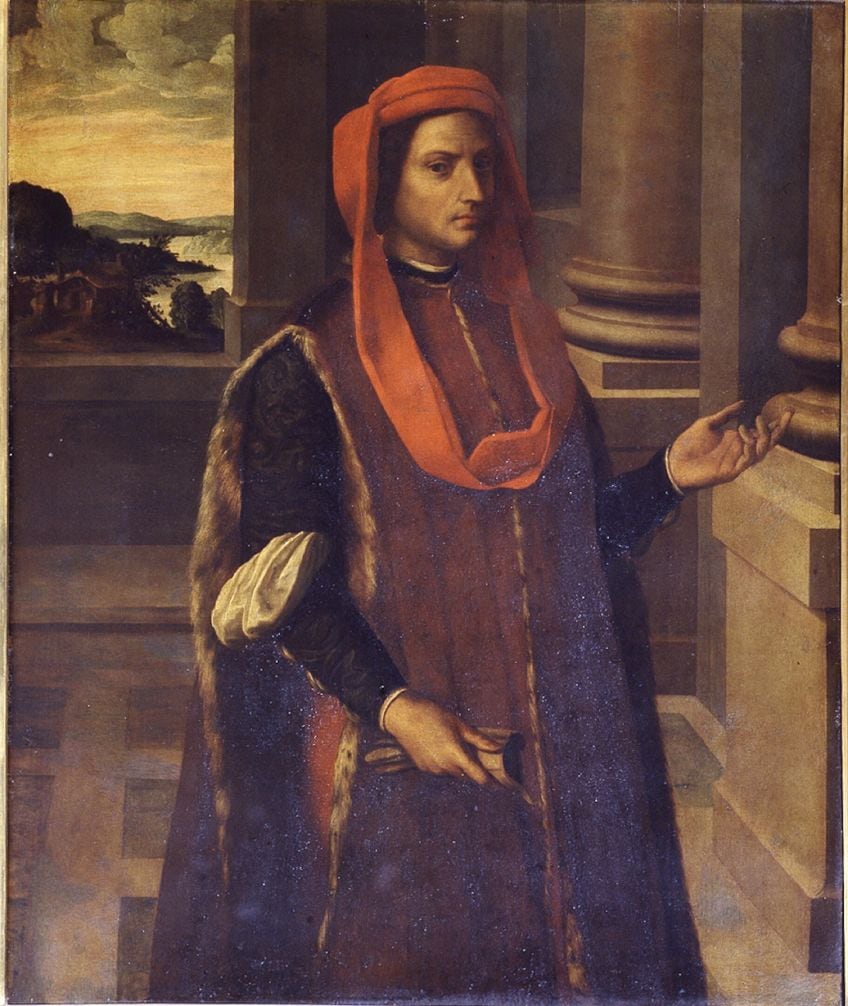
During this time, Florence’s main banking center was based in the city of Siena, however, due to the bankruptcy of the Bonsignoris, the city lost its status, passing it on to Florence. Before the Medici gained power in Florence, the leading family was the House of Albizzi. Toward the close of the 13th century, the Ordinances of Justice (statutory laws) were passed to become the constitution of the Republic of Florence. The merchant class also grew to develop more townhouses across the city. The Medici Bank became the largest bank in Europe and was major competition for the Albizzi family.
The Medici Bank, Trade, and Politics
The founder of the Medici Bank was Giovanni di Bicci de Medici, who is often credited as the main figure who sparked the family’s rise to fame. As one of the most important Medici family members, Giovanni di Bicci de’ Medici became the father of the politician Cosimo de’ Medici and “Popolani” successor Lorenzo the Elder. Giovanni di Bicci de’ Medici inherited much of his wealth from his father in the 14th century and was assisted by his uncle Vieri de’ Medici in climbing the ranks within the banking sector. He inherited the bank that his uncle started in Rome and became the Chief Papal Banker of the Medici Bank by 1397, enabling him to also manage the accounts of the Church.
One can consider the bank equivalent to a Renaissance multi-national company that ran across multiple Italian city-states in the North.
Giovanni was also a member of art guilds and owned two wool workshops in the city. In 1402, he also served as a judge and was on the panel that selected the design for the bronze doors of the Florence Baptistry. One will recognize the artist Lorenzo Ghiberti, who won the competition. In 1418, he also selected the architect Filippo Brunelleschi to work on the Church of San Lorenzo and commissioned Donatello for the sculptural decorations of the building.
Through the re-establishment of the papacy in Rome, Giovanni was also able to acquire the rights to alum mines and many tax-farming contracts. He also married the noblewoman Piccarda Bueri, whose wealthy family paid him a significant dowry. His philosophy toward blending with the rest of society involved instructing his sons to behave and dress like the rest of families of the working class to gain their favor, avoid conflicts, and establish a positive reputation. While he was offered many high office political positions, he was known to keep his distance from political matters, although he did serve as a governor of Pistoia later on and even implemented the system of land registration called Catasto in place of poll tax in Signoria. A 2016 series called Medici: Masters of Florence, depicts his character and was played by Dustin Hoffman.

The Medici family history with wealth was also built on wool trading, which aided in the rise of the family’s early successes in the 14th century, through operations between Spain and France. Cosimo the Elder, Giovanni’s son, overtook his father’s affairs around 1434 as an unofficial leader of the Florentine Republic. The alum mines proved prosperous for the family since they discovered an abundance of deposits in 1461. Alum was a key component in the dying process of certain fabrics, especially in textile manufacturing, which before the discovery of extra deposits by the Medici’s, forced Europe to buy alum. The head of the Catholic Church at the time, Pope Pius II, contributed to the establishment of the Medici as the main producers of alum in all of Europe. It was Cosimo the Elder who built the family’s reputation in politics by serving on the board of war known as the Dieci. One of Cosimo’s sons, Piero di Cosimo de’ Medici, was colloquially known as “Piero the Gouty” and was unable to accomplish as much in his few years of leading Medici affairs as his father. Piero was also not very interested in art.
The Magnificent Medici and the Pazzi Conspiracy
Piero’s son Lorenzo de’ Medici was perhaps the most enthusiastic patron of Italian art and culture in the Renaissance, he was also dubbed “the magnificent”. Perhaps with a few control tendencies, Lorenzo had his plans for his children and their futures. His children, Piero II, Giovanni, and Maddalena were all placed in strategic positions, however, Lorenzo’s leadership led to the ultimate demise of the family’s legacy. His son Giovanni became Pope Leo X and led the Catholic Church between 1513 and 1521. His daughter Maddalena was educated in humanistic teachings and was married off to Pope Innocent VIII in a politically beneficial arranged marriage to secure the relationships between the Medici and the Roman branches of the houses of Altoviti and Cybo.
Lorenzo’s son Piero II became his successor and ruled as lord of Florence between 1492 and 1494 when he was exiled.
Piero II was known as “Piero the Unfortunate” and was accused of poisoning Angelo Poliziano in 1494. Under Piero, Tuscany was invaded by Charles VIII of France, and led to brutal massacres. Piero’s actions toward Charles at that point led to public outrage and the Medici’s had to flee to Venice with the support of Philippe de Commines, a French diplomat. The family supported themselves by selling their collection of jewels acquired by Piero’s father, Lorenzo. Piero II died while fleeing the Battle of Garigliano and drowned in the Garigliano River. His tomb was designed by the architects Battista da Sangallo and Antonio da Sangallo the Younger.
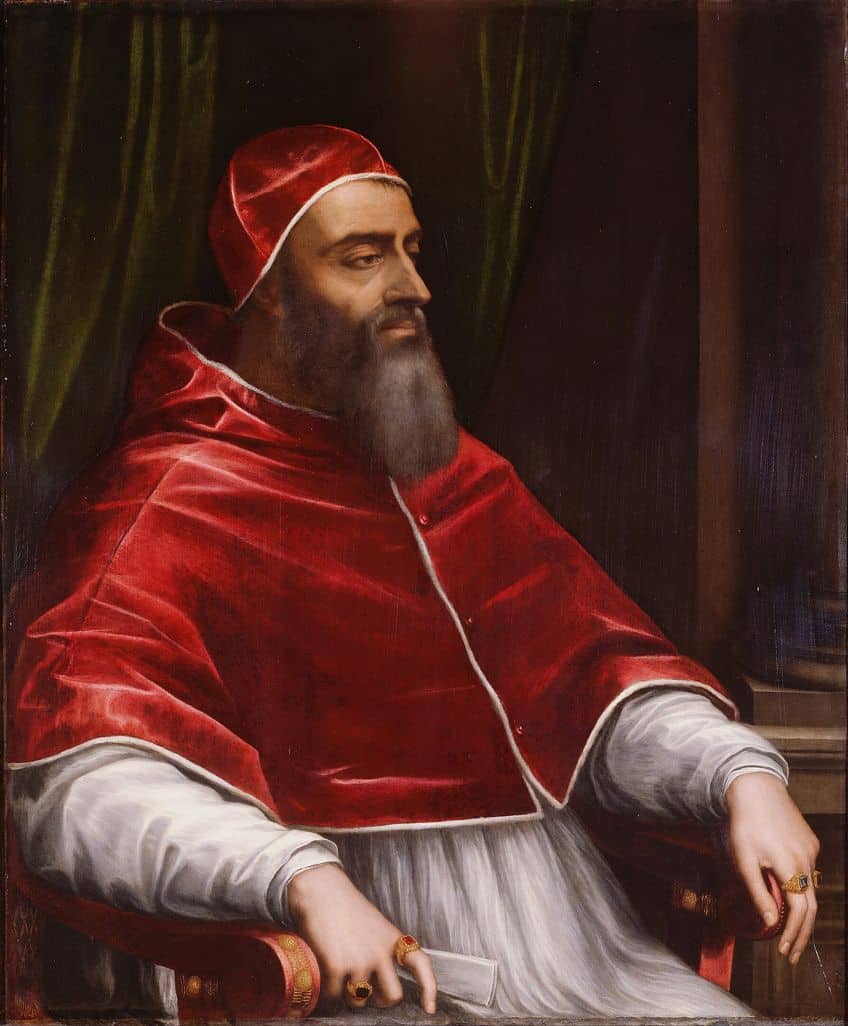
In 1478, the Pazzi conspiracy emerged after the attempted assassination of Lorenzo de’ Medici and his brother. It was rumored that the attempt was made by the powerful rival families Pazzi and Salviati, who had reasons to end the influence of the Medici. It was believed that these families approached Pope Sixtus IV, the then head of the Church, who knew of the plan but did not act to stop the attempt. The assassination was unsuccessful since it left Lorenzo injured with his brother sadly taking his place. As a result, Lorenzo adopted his illegitimate nephew Giulio de’ Medici, who was to become Pope Clement VII, also known as “the most unfortunate” Pope.
Return from Exile
The Medici’s exile lasted for a few years until 1512, when a descendant of Cosimo the Elder regained power, however, was assassinated as a Duke in 1537. Throughout the first quarter of the 16th century, there had been groups of anti-Medici factions who rejected the family’s control. Cosimo the Elder and his father, the founder of Medici Bank, originally implemented early forms of franchises, which enabled their descendants to grow their wealth and invest in culture and art. Throughout the 16th century, more than half of Florence were employed by the Medici’s.
Another notable expansion of Medici influence was through the succession of the 16th-century Duke Cosimo I, whose eldest son Francesco married the Archduchess of Austria Johanna.
The couple had two daughters, one of whom became the Queen of France and Navarre, leading to a succession of French monarchs with Medici heritage. Cosimo I’s youngest son Ferdinando overtook the Tuscan government, made contributions to the local silk industry, and engaged in strengthening the Franco-Tuscan alliance by marrying his niece to Henry the Great. He also attempted to set up a Tuscan colony in the Americas, which was unsuccessful. Ferdinando’s son Cosimo II, became the patron of famous astronomer Galileo Galilei while Ferdinando himself saw the introduction of the opera to Europe during the wedding of his niece. Ferdinando also implemented an edict of tolerance for heretics and Jews, making Livorno a refuge for persecuted groups. Cosimo II’s son, also named Ferdinando (Grand Duke) invested his time in exploring new technologies like thermometers and hygrometers, which were installed in the Pitti Palace. His son Cosimo III de’ Medici later became the Grand Duke of Tuscany, who eventually married his relative, the granddaughter of Henry the Great.
Prominent Artists and Artworks Under Medici Patronage
The Medici family contributed to the financial support underlying many famous paintings and sculptures in Florence with notable artists ranging from Masaccio to Raphael. Below, we will revise some of the most well-known works of art produced in connection with the Medici family to give you a better perspective of the different kinds of projects they commissioned and supported, as well as their preferred talents.

Reconstruction of the Basilica of San Lorenzo (c. 1419) by Filippo Brunelleschi
| Artist Name | Filippo Brunelleschi (1377 – 1446) |
| Date | c. 1419 |
| Medium | Architecture |
| Building Size (cm) | 1767.8 x 2499.3 |
| Where It Is Housed | Florence, Tuscany, Italy |
The Basilica di San Lorenzo is recognized as one of the city’s largest churches and was previously the Medici’s parish church. Around 1419, Giovanni di Bicci de Medici wished to reconstruct an 11th-century building and hired one of the best architects at the time, Filippo Brunelleschi, to lead the project. The church’s construction was only completed after Brunelleschi’s death with many interior additions such as the Sagresta Vecchia within the Medici Chapels and the historic Laurentian Library by Michelangelo. The architect Filippo Brunelleschi was also known as “Pippo” at the time and was also a prominent sculptor, goldsmith, and designer who is widely recognized for his contribution to modern engineering and Renaissance architecture. His use of mathematical techniques succeeded him through the innovation of the Florence Cathedral dome and linear perspective in art, which significantly transformed art well into the 19th century. In 1401, he also participated alongside Lorenzo Ghiberti in the competition to design a pair of bronze doors for the Florence Baptistery.
His work was also selected alongside Ghiberti, however, he forfeited the project to the young artist.
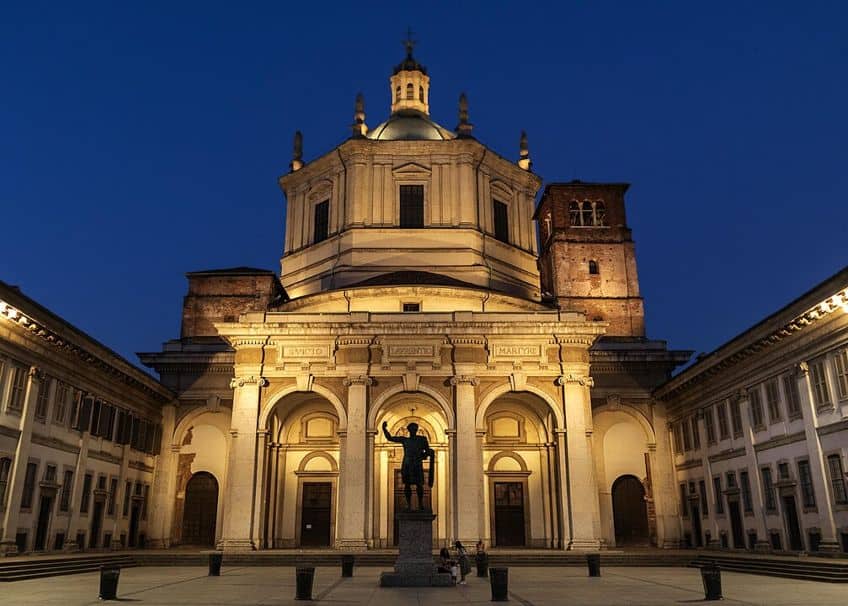
The Triumph of Fame (c. 1449) by Giovanni di ser Giovanni Guidi
| Artist Name | Giovanni di ser Giovanni Guidi (1406 – 1486) |
| Date | c. 1449 |
| Medium | Tempera, silver, and gold on wood |
| Dimensions (cm) | 92.7 (d) and 75.2 (verso) |
| Where It Is Housed | The Metropolitan Museum of Art, New York City, United States |
This circular artwork is known as a desco da parto or commemorative birth tray to celebrate the birth of Lorenzo de’ Medici in 1449. Fame is depicted as an allegorical figure and is surrounded by knights who pledge their allegiance to fame. The painting was created by Masaccio’s younger brother, Giovanni di ser Giovanni Guidi, who was also known as Scheggia, and was created as part of a customary practice of presenting sweets to a new mother on commissioned trays.
The Medici’s coat of arms can be seen at the top on the reverse side of the tray.
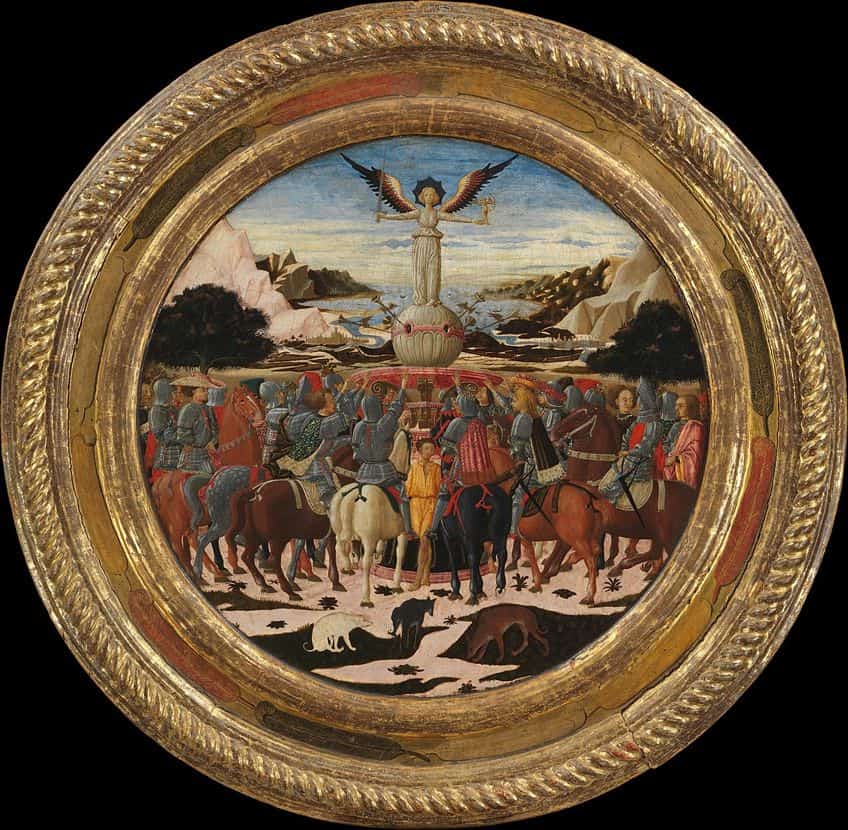
Ginevra de’ Benci (c. 1474 – 1478) by Leonardo da Vinci
| Artist Name | Leonardo da Vinci (1452 – 1519) |
| Date | c. 1474 – 1478 |
| Medium | Oil on panel |
| Dimensions (cm) | 38.1 x 37 |
| Where It Is Housed | The National Gallery of Art, Washington D. C., United States |
A highly influential figure in Europe at the time, Leonardo da Vinci painted this portrait of Ginevra de Benci, of whom one of her admirers was Lorenzo de ’Medici, among many others. The 16-year-old young lady was painted with porcelain white skin and an expression of austerity that expresses her platonic mood towards her marriage arrangement after she was betrothed to Luigi Niccolini. It is speculated that it was Bernardo Bembo, a Venetian ambassador to Florence, who commissioned the portrait, which now lies in the National Gallery of Art. The painting was completed when Da Vinci was only 21 years of age and was described by his admirers as incredibly life-like, such that it did not seem like a portrait painting, but rather Ginevra herself.
The portrait is also historically significant since it is the earliest known three-quarter-view portrait from Italian art history, which also shifted existing depictions of women in Renaissance portraiture.
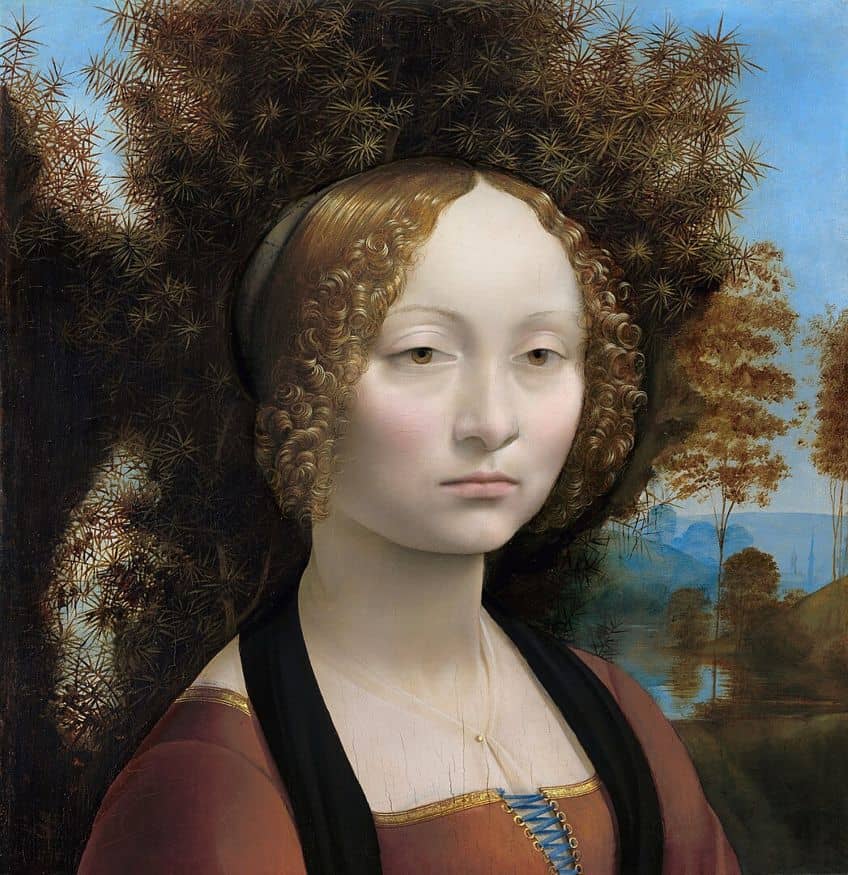
Portrait of Lorenzo de’ Medici, Duke of Urbino (c. 1518) by Raphael
| Artist Name | Raffaello Sanzio Urbino (c. 1483 – 1520) |
| Date | c. 1518 |
| Medium | Oil on canvas |
| Dimensions (cm) | 97 x 79 |
| Where It Is Housed | Private collection |
Originally sourced from the collection of Lord Northwick, a 19th-century collector, this famous portrait of Lorenzo de Medici was created by Raphael around 1518 and was initially believed to be a copy. After the painting underwent an extensive analysis by Professor Konrad Oberhuber, it was concluded that the portrait was a true Raphael artwork.
At the time of the painting’s commission, Raphael was already an established and recognized painter and was commissioned by Pope Leo X to paint his nephew, Lorenzo de’ Medici.

Medici Madonna (c. 1521 – 1534) by Michelangelo
| Artist Name | Michelangelo Buonarroti (1475 – 1564) |
| Date | c. 1521 – 1534 |
| Medium | Marble |
| Dimensions (cm) | 226 (h) |
| Where It Is Housed | San Lorenzo, Florence, Italy |
Located in the Sagrestia Nuova of the Basilica of San Lorenzo, this famous Medici Madonna statue was sculpted by the master sculptor himself, Michelangelo, sometime between 1521 and 1534. The sculpture is also believed to hold personal significance for Michelangelo through the figure of Mary and motherhood, which Michelangelo seemed to connect deeply with on an emotional level as described in his letters, notes, and poetry. The intimate sculpture shows the infant Jesus attempting to nurse from Mary, however, she appears slightly detached from a personal connection since Michelangelo depicted her as unable to offer the infant a secure embrace.
The statue remained incomplete and was moved to San Lorenzo by the Medici’s Mannerist painter Niccolò Tribolo.
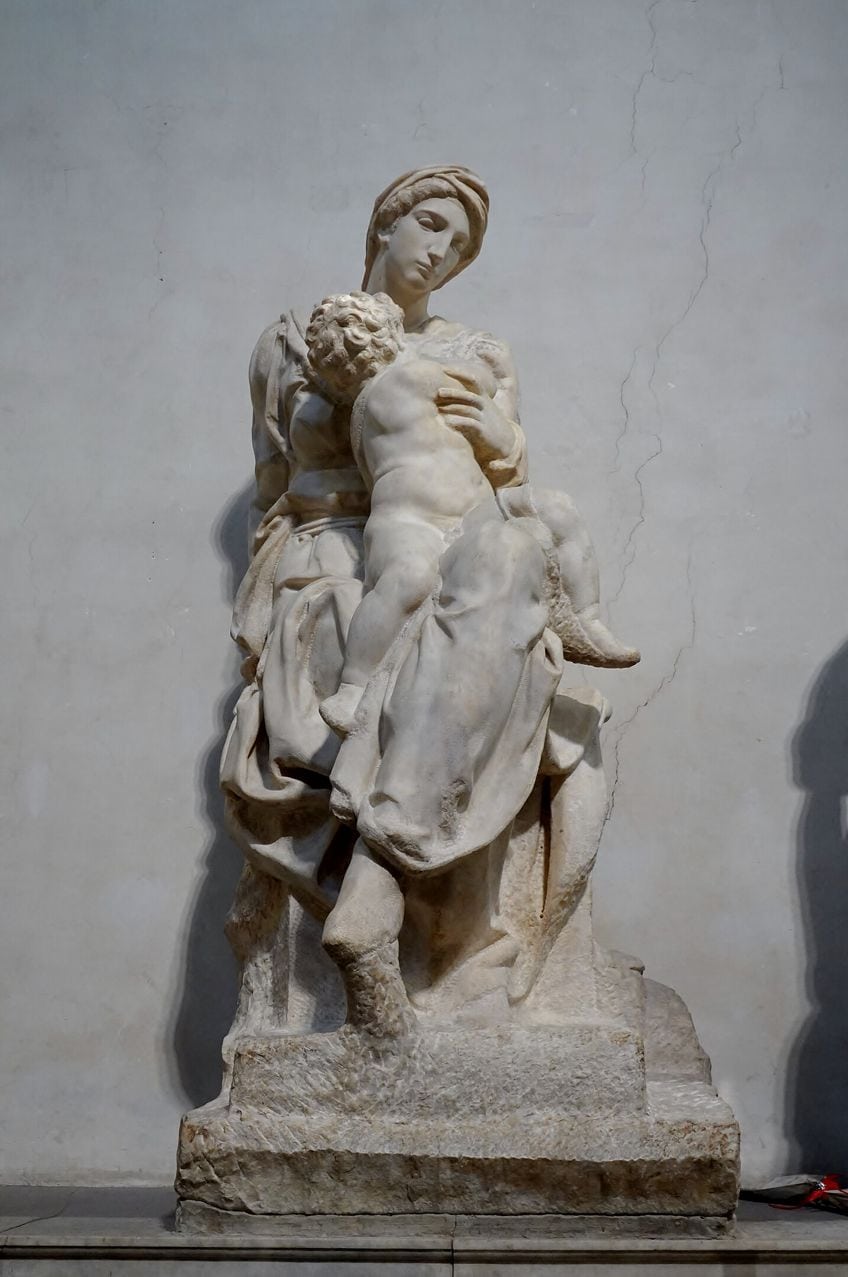
Ewer (c. 1575 – 1587) by Medici Porcelain Manufactory
| Artist Name | The Medici Porcelain Manufactory (c. 1575 – 1587) |
| Date | c. 1575 – 1587 |
| Medium | Soft-paste porcelain |
| Dimensions (cm) | 27.5 (h) |
| Where It Is Housed | The Metropolitan Museum of Art, New York City, United States |
This striking porcelain vessel is part of 59 surviving pieces from the Medici porcelain collection that is currently housed at the New York Metropolitan Museum of Art. In the 1560s, Francesco I de Medici founded a ceramics workshop with the sole purpose of reproducing the visual styles of Chinese porcelain through the signature blue and white color palette and design. The workshop took 10 years to refine the soft paste porcelain manufacturing method which became known as Medici porcelain and was composed of a white ceramic body decorated with cobalt.
The production of these vessels was expensive at the time and technically challenging, hence they were created in small quantities and stopped production completely with the death of Francesco I de Medici in 1587.

The Marie de’ Medici Cycle (c. 1621 – 1624) by Peter Paul Rubens
| Artist Name | Sir Peter Paul Rubens (1577 – 1640) |
| Date | c. 1621 – 1624 |
| Medium | Oil on canvas |
| Series | 24 |
| Dimensions (cm) | Varied |
| Where It Is Housed | The Louvre Museum, Paris, France |
This famous 24-series cycle was painted by the renowned Flemish painter and diplomat Sir Peter Paul Rubens between 1621 and 1624 for Marie de’ Medici after the death of Henry IV of France. The paintings were to be hung at the Luxembourg Palace in Paris and portray the major events and personal trials of Marie de’ Medici. While it is unclear why Rubens was commissioned to paint an almost heroic cycle of Marie de’ Medici, it is believed that her son Louis XIII may have played a role in influencing the final decision on the commission.
Marie de’ Medici became the regent in place of her son after her husband was assassinated in 1610.
In 1617, Marie de’ Medici was exiled after her son chose to take decisions into his own hands at the age of 15. While we have not covered all the famous artworks under the Medici patronage, a few additional famous works include Sandro Botticelli’s The Birth of Venus (c. 1480) and many Michelangelo creations since Michelangelo also lived with the family during his teenage years.
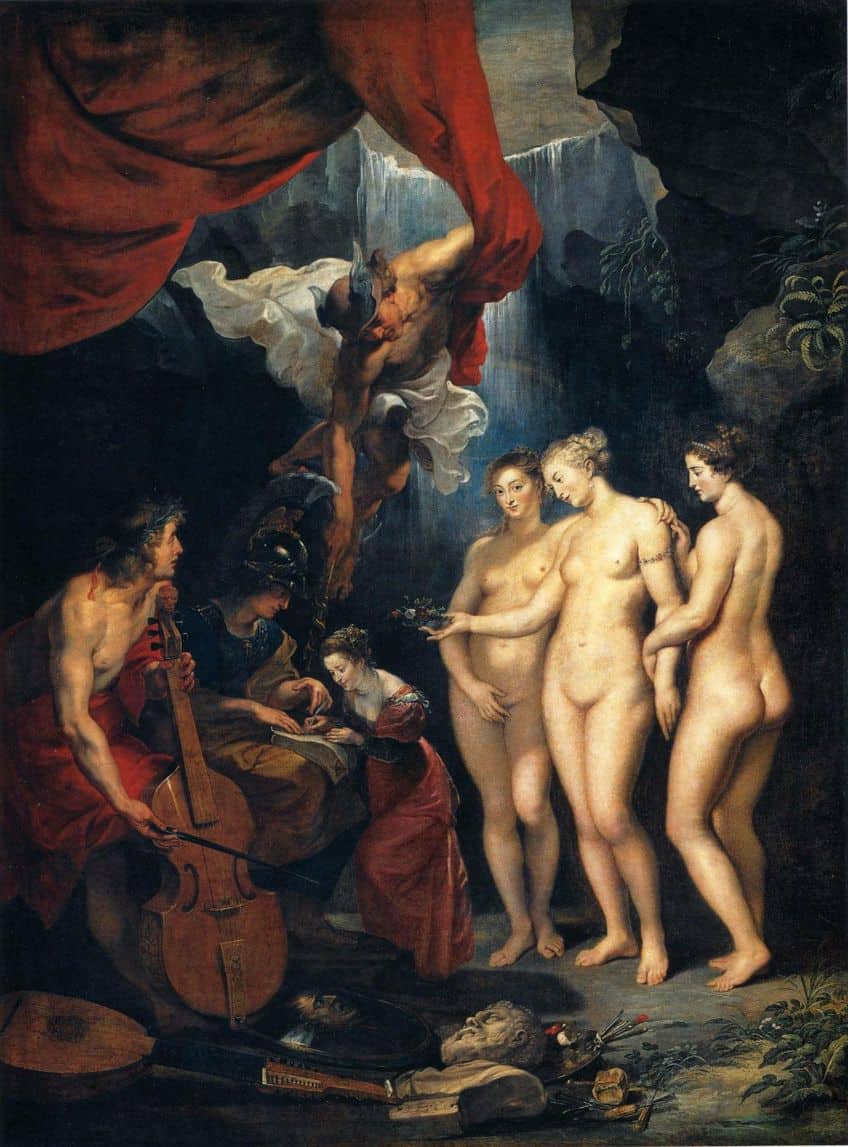
The Medici family would go on to grant patronage to numerous artists throughout the 16th and 17th centuries, until the decline of Medici male heirs and the gradual decline of the reputation of Grand Duke Cosimo in the 18th century. Anna Maria Luisa eventually left the Medici property to the state and ended the Medici family line with her death in 1743. The Medici dynasty continued only through the female line via Francis I, with several extant branches of the family surviving.
Frequently Asked Questions
Who Were the Medici Family?
The powerful Medici family were an influential dynasty of Italian political and banking leaders, who contributed significantly to the art and cultural development of Florence. The family held a large influence over Italian art and politics throughout the 15th and 18th centuries, and were also affiliated with French monarchs, the Catholic Church, and many famous High Renaissance artists.
Which Famous Artists Worked for the Medici Family?
Among the many renowned figures who worked under the patronage of the Medici family between the 15th and the 18th centuries include Leonardo da Vinci, Raphael, Sandro Botticelli, Michelangelo, Peter Paul Rubens, Benvenuto Cellini, and Francesco Bianchi, among others.
Which Famous Buildings Were Created for the Medici Family?
There are many buildings and historical spaces that were built and designed specifically for the Medici family. These included the Uffizi Gallery, the Palazzo Medici Riccardi, Palazzo Pitti, the Basilica di San Lorenzo, the Medici Chapels, and the Boboli Gardens, among the most famous sites.
Jordan Anthony is a Cape Town-based film photographer, curator, and arts writer. She holds a Bachelor of Art in Fine Arts from the University of the Witwatersrand, Johannesburg, where she explored themes like healing, identity, dreams, and intuitive creation in her Contemporary art practice. Jordan has collaborated with various local art institutions, including the KZNSA Gallery in Durban, the Turbine Art Fair, and the Wits Art Museum. Her photography focuses on abstract color manipulations, portraiture, candid shots, and urban landscapes. She’s intrigued by philosophy, memory, and esotericism, drawing inspiration from Surrealism, Fluxus, and ancient civilizations, as well as childhood influences and found objects. Jordan is working for artfilemagazine since 2022 and writes blog posts about art history and photography.
Learn more about Jordan Anthony and about us.
Cite this Article
Jordan, Anthony, “Medici Family – Discover Why This Family Was So Influential.” artfilemagazine – Your Online Art Source. January 15, 2024. URL: https://artfilemagazine.com/medici-family/
Anthony, J. (2024, 15 January). Medici Family – Discover Why This Family Was So Influential. artfilemagazine – Your Online Art Source. https://artfilemagazine.com/medici-family/
Anthony, Jordan. “Medici Family – Discover Why This Family Was So Influential.” artfilemagazine – Your Online Art Source, January 15, 2024. https://artfilemagazine.com/medici-family/.


